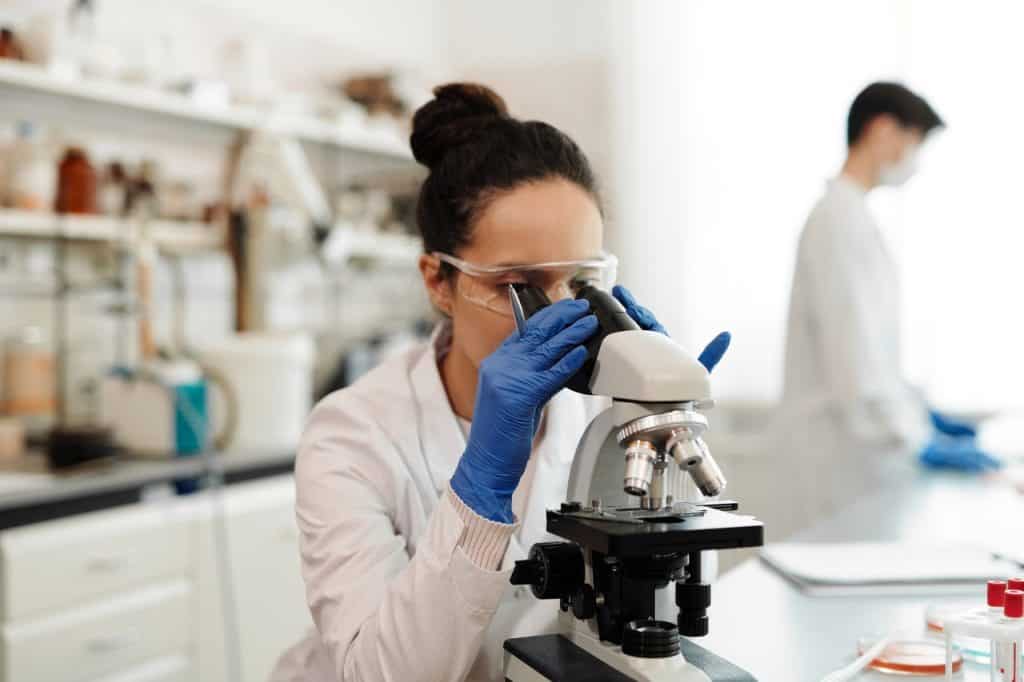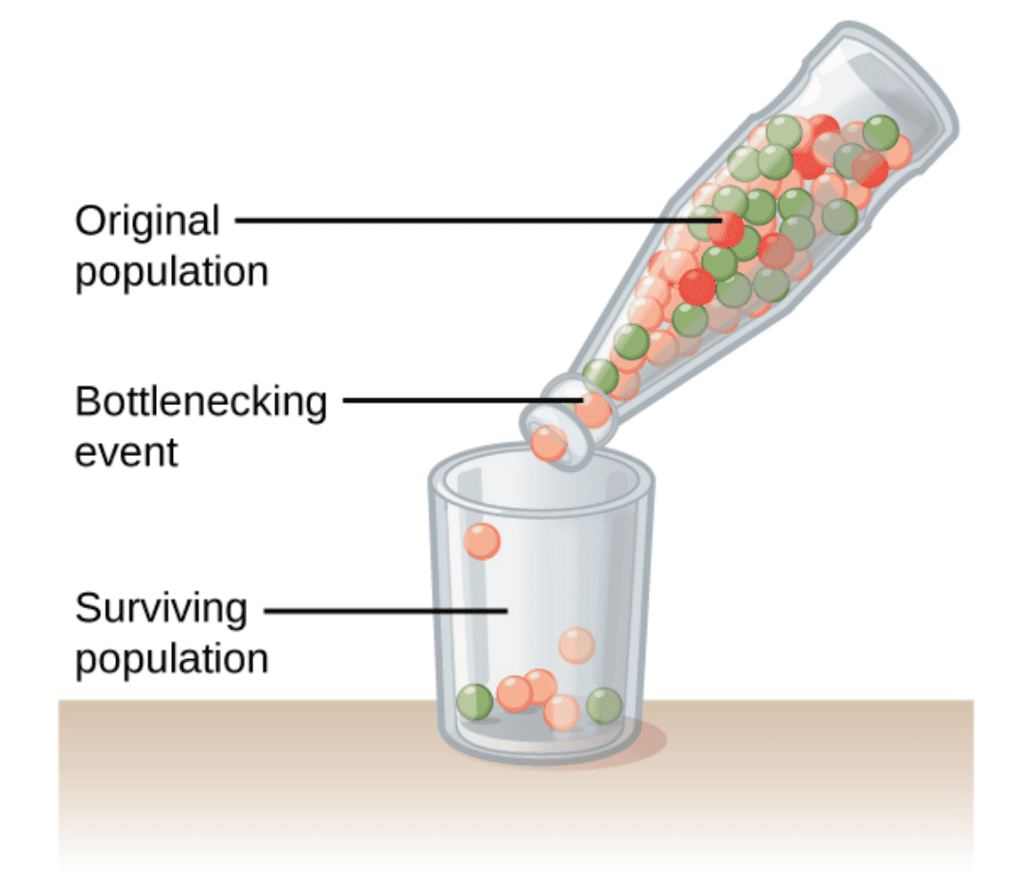Just finished up Unit 3 of QCAA Biology and are making a start on Unit 4?
We can help you get an idea of what exactly you’ll be covering in this unit! We’ll take you through each of the topics you’ll be studying and give you some hand guides to help you complete your assessments for QCAA Biology Unit 4.
Keen to get started? Let’s go!
What is Unit 4 in QCAA Biology all about?
Topic 1: Describing Biodiversity
Topic 2: Ecosystem Dynamics
QCAA Biology Unit 4 Assessments
Study Tips
What is Unit 4 in QCAA Biology all about?
In Unit 4, there is a strong focus on the way biology processes and phenomena ensure the continuity of life on Earth. We will come to learn about how organisms either triumph or perish when facing adverse environmental conditions or interactions with other species. Additionally, we will look at how life changes over time.
We will dive into the very small world of DNA and the basic units of inheritance to look at how cellular processes and gene pools are affected by a variety of factors.
Further, we will look at how some very important biological processes ensure that diversity within a population is maintained. We will become familiar with a variety of biotechnological techniques, such as DNA profiling, gel electrophoresis, and recombinant DNA.
This knowledge should then be transferred to a more grand sphere, where we will investigate how entire species will change and evolve, and how new species arise.
Topic 1: DNA, Genes, and the Continuity of Life
This topic is composed of six subtopics, and focusses on the concepts of DNA structure and replication, mutation, inheritance and gene expression, as well as biotechnologies.
DNA Structure and Replication
Within this subtopic, you will develop your understanding of the composition of DNA and the enzymes involved in DNA replication. In particular, you are interested in the double-helical nature of DNA and the complementary base pairing.
Further, you should have an understanding of what a nucleotide is, and the roles that DNA helicase and DNA polymerase play in replication. With the idea of replication, the notion of directionality is incredibly important.
Image sourced from BioNinja
Key Takeaways
- Understand the structure of DNA
- Understand and be able to explain the roles of DNA helicase and DNA polymerase
Cellular Replication and Variation
Within this subtopic, we are interested in the stages of meiosis. In particular, the roles that homologous chromosomes play, as well as how crossing over, random assortment, and random fertilisation ensure genetic variation in offspring.
You will also develop an understanding of spermatogenesis and oogenesis and be able to compare the processes that take place within each.
Key Takeaways
- Understand the role that homologous chromosomes play in meiosis I and II
- Understand and explain how crossing over, random assortment, and random fertilisation contribute to genetic variation
- Compare and contrast spermatogenesis and oogenesis
Gene Expression
In this subtopic we will differentiate between genes and genomes. In particular, we will break genes down into their smaller components and examine both coding and non-coding DNA (as well as the importance of each).
We will look into the processes involved in protein synthesis, as well as how protein synthesis allows for gene expression.
With regard to gene expression, we are also interested in the factors that will influence expression — notably, environmental factors, transcription factors, and other genes.
When looking into transcription factors, we will examine those that regulate morphology (HOX genes) and cell differentiation (SRY genes).
Key Takeaways
- Understand the difference between gene and genome and be able to define both
- Understand that genes consist of coding and non-coding sections — both of which are important
- Be able to explain protein synthesis and the factors influencing gene expression
Choosing a school is a big decision! Check out our research into the top public and private ATAR schools in Brisbane to help make your decision that little bit easier!
Mutations
Within this subtopic we will investigate how mutations may arise in genes and in chromosomes as a result of errors in DNA replication, cell division (in particular, how nondisjunction results in aneuploidy) and also due to exposure to a variety of mutagens.
We are particularly interested in how these mutations alter gene pools and lead to genetic variation in offspring.
Further, we should be able to apply our understanding of mutations and human karyotypes to identify ploidy changes and determine genetic disorders from a karyotype that has been presented to us.
Image sourced from Lab Tests Online
Key Takeaways
- Explain how mutations arise in DNA replication, cell division and due to mutagens
- Explain how nondisjunction results in aneuploidy
- Identify mutations in human karyotypes
Inheritance
From this subtopic we should develop our abilities to practically apply our theoretical understandings of inheritance and genetic variation. In particular, we should be able to predict the genotypic and phenotypic frequencies of offspring, given information about the genes held by the parents.
Additionally, we should be able to interpret data in the form of frequency histograms and Punnett squares to determine patterns of inheritance for autosomal dominant alleles, sex-linked alleles and multiple allele inheritance.
Further, you should also be able to define polygenic inheritance.
Key Takeaways
- Use Punnett squares and frequency histograms to predict genotypic and phenotypic frequencies in offspring
- Understand the patterns of inheritance for autosomal dominant alleles, sex-linked alleles, and multiple allele inheritance
Biotechnology
Within this subtopic there are five biotechnological processes of interest to us. These are recombinant DNA, DNA sequencing, DNA profiling, polymerase chain reaction (PCR), and gel electrophoresis.
For recombinant DNA we are interested in the four primary stages of development (isolation, insertion, joining, and amplification). With DNA sequencing and DNA profiling, we are interested in identifying unique genetic information.
And with PCR and gel electrophoresis, we are interested in the purposes of each. In particular, how each of these processes can be used in the other techniques.
For all five biotechnological processes, we should be able to analyse data from each technique to determine how successful it has been and to draw conclusions.
Key Takeaways
- Explain the process of making recombinant DNA
- Use DNA sequencing and profiling to identify unique genetic information
- Explain the purposes of PCR and gel electrophoresis
- Analyse data from each biotechnological technique
Topic 2: Continuity of Life on Earth
This topic is composed of three subtopics and focusses on the concepts of evolution, natural selection and speciation. In particular, we are interested in how life changes over time in response to selection pressures and the presence or absence of genetic diversity.
Evolution
Within this subtopic, we will develop an understanding of and be able to define the evolution, microevolution and macroevolution.
Additionally, we should be able to analyse data to determine periods of evolutionary radiation and mass extinction, as well as determining the degree of genetic similarity between organisms — as evidence for evolution.
Key Takeaways
- Develop an understanding of evolution, microevolution, and macroevolution
- Analyse data to determine periods of evolutionary radiation and mass extinction
Natural Selection and Microevolution
Within this subtopic, we are interested in understanding how natural selection results in microevolution. In particular, we will explore how various selection pressures influence organisms based on their phenotypes or genotypes.
We will also look at the three types of phenotypic selection (stabilising, directional and disruptive) and be able to interpret data to determine which form of phenotypic selection is present.
Additionally, we should understand the concepts of mutation, gene flow and genetic drift to explain how they contribute to microevolutionary change.
Image sourced from Khan Academy
Key Takeaways
- Understand how selection pressures impact organisms based on their phenotypes and genotypes
- Identify the three types of phenotypic selection
- Understand how mutation, gene flow and genetic drift contribute to microevolutionary change
Speciation and Macroevolution
This subtopic focusses on how an accumulation of microevolutionary changes over time will result in the development of entirely new species. We will look at the four patterns of diversification — divergent, converge, parallel and coevolution — and the three modes of speciation — allopatric, sympatric and parapatric.
Just as there are factors that influence a species survival, we will come to learn that there are factors influencing gene flow.
Notably, we will look at the different methods of isolation that impact gene flow. These include, geographic isolation, reproductive isolation, spatial isolation, and temporal isolation.
Further, we explore the importance of gene flow and genetic variation with regards to how they reduce risk of extinction.
From our newfound understanding, we should be able to interpret data to determine if speciation has occurred.
Key Takeaways
- Understand the relationship between microevolution and speciation
- Recognise the four patterns of diversification and the three modes of speciation
- Understand the importance of gene flow and the methods of isolation that impact gene flow
- Understand that reduced genetic diversity increases the risk of extinction
- Interpret data to determine if speciation has occurred
QCAA Biology Unit 4 Assessment
Within this unit, there are two assessments that you will need to complete. This is your research investigation and your external exam.
Check out our QCE Cohort Comparison Tool to work out what marks you need to get in Unit 4 to achieve your ATAR goal!
For this task, you will need to research a topic at a great depth in order to answer a research question. Similarly to the data test and student experiment, you will be required to analyse data in order to support your conclusions.
For extra guidance, feel free to check out our article on how to ace your research investigation here!
Tips for Study
The biggest tip for studying QCAA Biology is to mind-map everything! All the content you will learn across Units 3 & 4 are connected. Finding these connections makes memorisation so much easier.
This article on how to ace your external exam has a number of tips that should be implemented throughout the entire year to give yourself the greatest chance at success!
Further, don’t forget to check out the following articles for extra tips and practice:
- Downloadable QCAA Biology Practice Exam
- Practice Questions for Biology External Assessment
- Practice Multiple Choice Questions for Biology External Assessment
- Learn to take Effective Study notes for QCAA Science Subjects
Studying Organic Chemistry in Unit 4 Chem at the moment? It feels like there’s nothing organic about it… check out our Unit 4 Chemistry Guide! Or check out our Unit 4 Ultimate Guide for Maths Methods!
Are you looking for some extra help with revising QCAA Biology Unit 4?
We have an incredible team of QLD Biology tutors and mentors!
We can help you master the QCAA Biology syllabus and ace your upcoming Biology assessments with personalised lessons conducted one-on-one in your home or online!
We’ve supported over 8,000 students over the last 11 years, and on average our students score mark improvements of over 20%!
To find out more and get started with an inspirational QLD tutor and mentor, get in touch today or give us a ring on 1300 267 888!
Katelyn Smith was a pioneer in the Queensland ATAR system. After graduating in 2020 with an ATAR of 98.40, she now studies a Bachelor of Advanced Science (Honours) at The University of Queensland — majoring in Physics. Through her studies, she hopes to develop a greater appreciation for how the wonders of the universe work. When she isn’t slaving away behind her unnecessarily large textbooks, she enjoys catching up with friends, scrolling mindlessly through TikTok, and sleeping.






